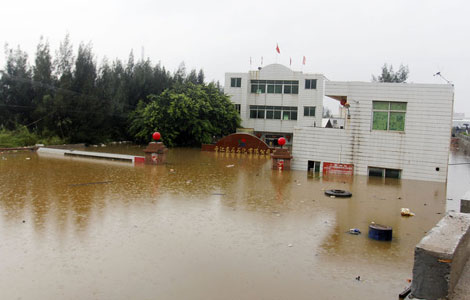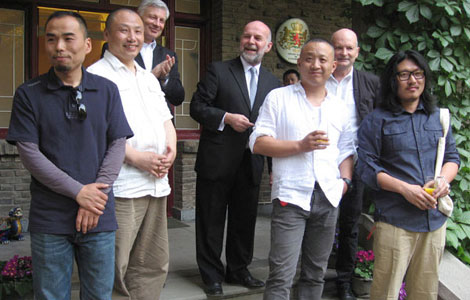
New archaeological discoveries in Yuyao city, in eastern China's Zhejiang province, provide a clearer picture of life in China's Neolithic age and confirm that the nation originated the practice of paddy cultivation.
Archaeologists are completing a 10-year dig in Tianluo Mountain, which demonstrates a clear layout of typical Neolithic tribes, Sun Guoping, captain of the exploration team, told China Daily on Tuesday.
"It is so far the best preserved site of the Hemudu culture," he said, referring to one of the cradles of Chinese civilization.
"We can see a clear wooden structure of the living and working areas of a tribe. There were walls, food stores, paddy fields and even piles of rice husks."
The Hemudu site recorded primitive activities of ancient China from 7000-5000 BC, one of the earliest recordings of China's Neolithic age. Archaeological exploration of the site began in 1973.
Discoveries at the Tianluo Mountain site prove that the practice of cultivating paddy started in China, Sun said.
He said the site covers an area of more than 30,000 square meters with six layers. Some 1,800 sq m of land has been explored during the past 10 years of exploration, and more than 7,000 relics have been discovered.
Yao Xiaoqiang, deputy curator of the Hemudu Cultural Site Museum, said that the Tianluo Mountain site had well-preserved paddy fields from the early and late Hemudu period.
"The relics had recorded the developing process of the earliest agricultural activities in the world. You can see the complete layout of primitive paddy fields, which is of great research value," Yao said.
Many of the discoveries were the first of their kind in 40 years' exploration of Hemudu culture, he said.
Ancient ladders made from a single piece of wood, big houses for ritual activities, wood-carved ritual wares with birds, and wooden swords allowed people to imagine what lives were like more than 7,000 years ago.
"The ritual houses and wares proved that people at that period had certain kinds of beliefs, while the food stores told us what they ate," said Yao.
The Tianluo Mountain site was accidentally discovered in 2001 by locals who were trying to drill a well. Sun and his team judged that it might be a well-preserved relic of the Neolithic age. After three years' research and preparation, exploration of the site officially started in 2004.
To better protect the site, the local government spent more than 10 million yuan ($1.6 million) to build a 4,000 sq m shelter above it. The shelter has been open to tourists since 2007.
Sun said that after 10 years' exploration, the discoveries and achievements have been fruitful, and since the relics need further protection, the exploration will end by June.
The team will then focus on sorting and studying the findings, and protecting the relics.







